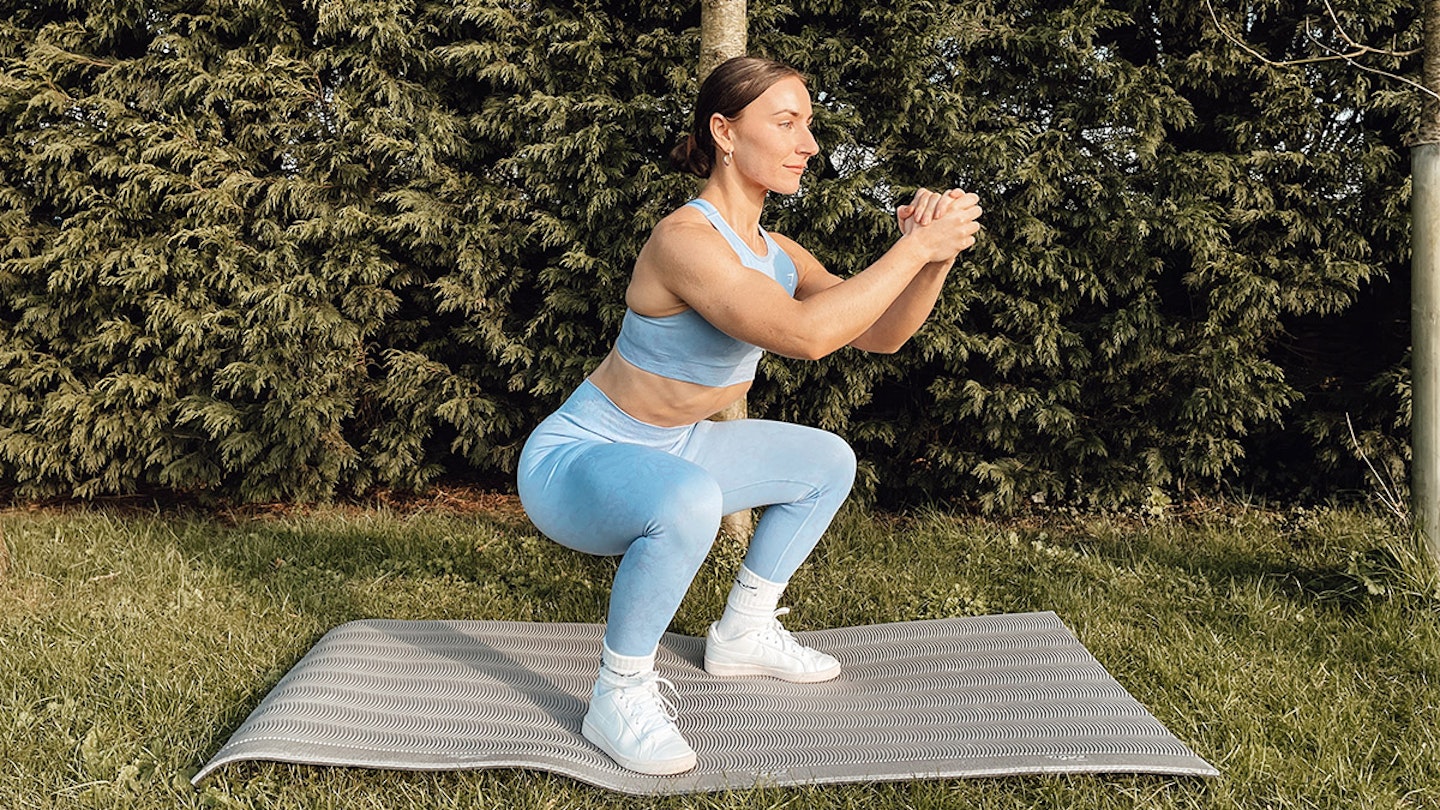It’s an exercise that’s constantly put on a pedestal to help you gain bigger glutes, leg strength and improve your lower body mobility - but how do you actually do a proper squat?
“Squats are a brilliant compound exercise that work all of the leg muscles including the quadriceps, glutes and hamstrings,” says Coach Joe Neate, a personal trainer and strength and conditioning coach. “As well as working the leg muscles it also helps with strengthening your core, the lower back and should be a staple in your workout routine.”
If not performed correctly, not only will you find yourself seeing little results from your squats, but it can also lead to injury. Common mistakes Joe see’s include:
• Knees caving in - 'Knee valgus' or knees caving inwards can cause knee pain over time or back pain as the body’s weight is not distributed evenly throughout the foot.
• Hunching of the back - This happens when weak muscles in the core and back don’t function and stabilise to maintain posture, or if you have tight and weak hip flexors.
• Tight ankles - This prevents you from being able to squat low and maintain foot contact with the ground. Once the heel loses this contact, you become unstable and the correct muscles aren’t used.
To avoid these mistakes, here’s Joe’s advice on how to do a proper squat step-by-step. Once you’ve mastered this, why not mix things up and give one of these other squat variations a go?
How to do a proper squat
1. Make sure you’re wearing the correct footwear
“Before you get into the squat, make sure you’re wearing a flat based shoe as this will help you perform the technique correctly,” says Joe. “Avoid wearing running shoes as these do not help with stability and if you don’t have flat shoes, go bare-foot.”
2. Set yourself up
Take a comfortable and natural stance. Joe suggests having feet between hip and shoulder-width distance apart.
“Before you squat, screw your feet into the floor. Your knees should now naturally push outwards and your feet should have a tripod contact with the floor. These contact points are your big toe, the outside of the foot and the heel.
3. The squat
As you squat down keep your chest open, shoulders back and lead with your hips as if you are sitting down into a chair while maintaining that tripod contact through your feet. Your knees should naturally push outwards if this is maintained. As you stand up, push your feet into the floor as this will make you feel more powerful and stable. And don’t let those knees cave in!
How often should you do squats?
This really depends on your goal, Joe says. “If you're a beginner start with doing squats two times a week, focusing on your technique and form. Aim for 3 sets of 15 reps with a one minute rest in between each set.”
If muscle and strength is your goal, then you need to be doing a variation of weighted squats. “Start with a dumbbell or kettlebell and then transition into barbell squats if you’re feeling confident,” says Joe. You shouldn’t move onto this until you’ve mastered a bodyweight squat. “Aim for 3 sets of 8-10 reps with a 1:30 minute rest in between each set and try to select a weight that is heavy enough that 8-10 reps is a challenge.”
Different squat variations to try
Sumo stance squat
Why: This is great for targeting the glutes and adductors (then inner thigh muscles).
How: Take your feet wider than shoulder-width apart with your feet slightly turned out. Squat down while making sure your knees are still pushing outwards, then stand back up.
Narrow stance squat
Why: This is good for targeting the quads as well as the glutes.
How: Stand with your feet a little closer together than hip-width apart and follow the same technique as normal squats. This variation is harder, so go slower and make sure you maintain a good posture.
Bulgarian split squat
Why: This is good for targeting each leg individually, especially if one is weaker than the other.
How: This movement involves lots of balance and is classed as an advanced squat variation. Put one leg back on a bench or chair, and lower your front leg down into a lunge position. Push back through this leg to stand. Your back leg is used for balance, while your front leg is doing the squat.
Popular articles to read next
The best garage gym ideas and everything you need to set it up
